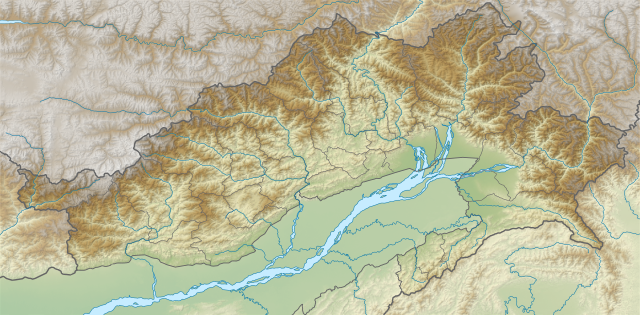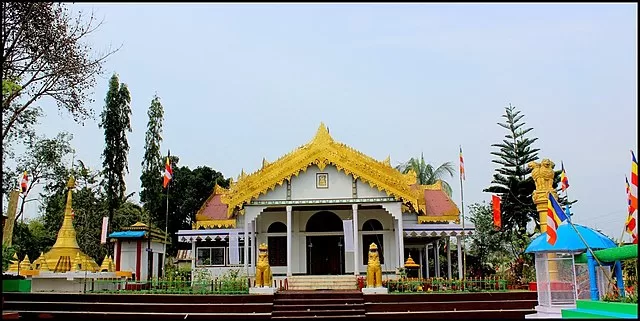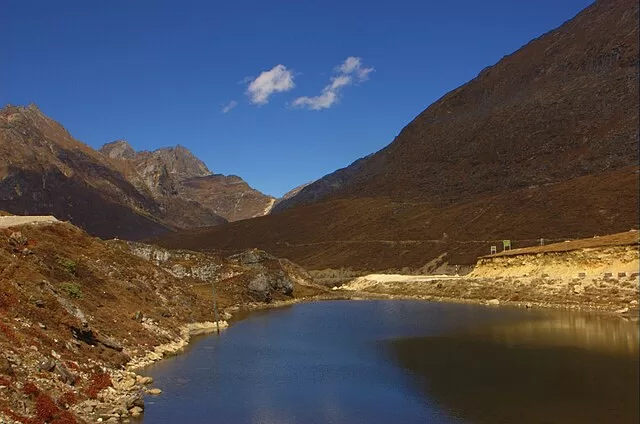Itanagar, the capital city of Arunachal Pradesh in northeastern India, is known for its breathtaking natural beauty and diverse cultural heritage. To truly appreciate and plan your visit to this enchanting city, it’s crucial to understand the weather patterns and climate of Itanagar. In this article, we will delve into the details of Itanagar’s weather, including its seasons, climate characteristics, and provide a reliable forecast for your convenience.

Understanding the Geography of Itanagar
Before diving into the weather specifics, let’s explore the geography of Itanagar. Situated in the eastern Himalayan foothills, Itanagar is blessed with lush green forests, gushing rivers, and stunning mountain ranges. Its elevated location contributes to the unique climatic conditions experienced in the region.
Itanagar’s Climate Overview
Itanagar experiences a subtropical highland climate with monsoon influences. The climate is influenced by its geographical location, surrounded by the Himalayas to the north and the Brahmaputra Valley to the south. The city enjoys a pleasant climate throughout the year, with temperatures varying across seasons.
The Four Seasons of Itanagar

1. Spring (March to May)
Spring in Itanagar is a beautiful time when the city comes alive with vibrant flora and fauna. The weather during this season is pleasant, with temperatures ranging from 15°C to 25°C (59°F to 77°F). It’s an ideal time to explore the natural wonders of Itanagar, as the temperature is neither too hot nor too cold.
2. Summer (June to August)
Summer in Itanagar brings warm temperatures and occasional rainfall. The average temperature during this season ranges from 20°C to 30°C (68°F to 86°F). Itanagar experiences moderate to heavy rainfall during the monsoon season, offering respite from the summer heat. It’s advisable to carry an umbrella or raincoat when visiting during this time.
3. Autumn (September to November)
Autumn in Itanagar is a delightful season characterized by mild temperatures and clear skies. The weather becomes cooler, with temperatures ranging from 15°C to 25°C (59°F to 77°F). It’s an excellent time to witness the stunning landscapes of Itanagar, as the vegetation is lush and the weather is pleasant for outdoor activities.
4. Winter (December to February)
Winter in Itanagar brings a slight chill to the air, with temperatures ranging from 5°C to 15°C (41°F to 59°F). The city experiences cold and dry weather during this season, making it essential to carry warm clothing. Winter is also an excellent time to explore the cultural heritage of Itanagar, as various festivals take place during this period.
Weather Forecast: What to Expect When Visiting Itanagar
When planning a trip to Itanagar, it’s essential to check the weather forecast to ensure a comfortable and enjoyable experience. The city’s climate is influenced by the Indian Monsoon, resulting in significant variations in temperature and rainfall throughout the year.
During the summer months, expect moderate to heavy rainfall, so pack your rain gear accordingly. Winter brings cooler temperatures, especially during the nights, so layer your clothing to stay warm. It’s advisable to keep an eye on the weather forecast closer to your visit to Itanagar for the most accurate information.
People also ask
How is the weather in Itanagar in summer?
In summer, Itanagar experiences warm temperatures and occasional rainfall. Itanagar, the capital city of Arunachal Pradesh in northeastern India, has a subtropical highland climate with monsoon influences. The summer season in Itanagar typically spans from June to August. Here’s a description of the weather you can expect during this time:
During the summer months, Itanagar sees average temperatures ranging from 20°C to 30°C (68°F to 86°F). The weather is generally warm and can feel moderately humid. The city receives intermittent rainfall due to the monsoon season, which brings relief from the heat and contributes to the region’s lush greenery.
It’s important to note that the rainfall in Itanagar during the summer season can vary. Some days may experience light showers, while others may have more intense rainfall. The rain showers often occur in the form of afternoon or evening thunderstorms, which can be quite refreshing.
When planning a visit to Itanagar during the summer, it’s advisable to come prepared for both warm weather and rainfall. Pack lightweight and breathable clothing, such as cotton shirts, shorts, and comfortable footwear. It’s also recommended to carry an umbrella or a raincoat to protect yourself from sudden showers.
Despite the occasional rain, summer in Itanagar still offers ample opportunities for exploration and enjoyment. The landscapes are vibrant and lush, making it a great time to visit nearby natural attractions, such as Ita Fort, Gompa Buddhist Temple, and the scenic Polo Park. Just be sure to check the weather forecast and plan your outdoor activities accordingly.
In summary, summer in Itanagar brings warm temperatures, occasional rainfall, and lush greenery. It’s a good time to visit if you don’t mind the possibility of rain showers and want to experience the city’s natural beauty at its peak. With the right preparation and flexibility, you can make the most of your visit to Itanagar during the summer season.
Which tribes are in Itanagar?
In Itanagar, the capital city of Arunachal Pradesh, several tribes reside, each with its unique cultural identity. Arunachal Pradesh as a whole is known for its rich tribal diversity, and Itanagar serves as a melting pot of various indigenous communities. Here are some of the prominent tribes found in and around Itanagar:
- Nyishi: The Nyishi tribe is the largest ethnic group in Arunachal Pradesh, including Itanagar. They primarily inhabit the Papum Pare district, where Itanagar is located. The Nyishi people have a distinct cultural heritage, known for their vibrant festivals, traditional attires, and agricultural practices.
- Galo: The Galo tribe resides in the West Siang district, which is close to Itanagar. They have a strong presence in the region and are known for their unique craftsmanship, traditional festivals like Mopin, and their proficiency in agriculture and horticulture.
- Adi: The Adi tribe is one of the major tribes of Arunachal Pradesh, with significant populations in various districts, including Papum Pare. They have distinct subgroups like Adi Galo, Adi Minyong, Adi Padam, and Adi Pasi. The Adi people have a rich cultural heritage, and their traditional villages, unique handlooms, and vibrant festivals attract visitors.
- Apatani: The Apatani tribe primarily resides in the Ziro Valley, which is near Itanagar. They are known for their distinctive facial tattoos, intricate handloom work, and well-preserved cultural practices. The Apatani people have gained recognition for their sustainable agricultural techniques and their contribution to the conservation of the environment.
- Tagin: The Tagin tribe is mainly found in the Upper Subansiri district, adjacent to Itanagar. They have a close affinity to the Adi tribe and share some cultural similarities. The Tagin people are known for their unique craftsmanship, particularly in bamboo and cane products, and their agricultural practices.
These are just a few examples of the tribes present in and around Itanagar. It’s important to note that Arunachal Pradesh is home to many more indigenous communities, each with its distinct language, customs, and traditions. The cultural diversity of Itanagar makes it an intriguing destination for those interested in exploring and experiencing the rich tribal heritage of the region.
Which is the coldest city of Arunachal Pradesh?
The coldest city in Arunachal Pradesh is Tawang. Tawang is a picturesque town located in the northwestern part of Arunachal Pradesh near the border with Bhutan and China. It is situated at an elevation of approximately 3,048 meters (10,000 feet) above sea level in the lap of the Eastern Himalayas.
Due to its high altitude and mountainous terrain, Tawang experiences extremely cold temperatures, particularly during the winter season. The winter months, from December to February, bring freezing temperatures and occasional snowfall to Tawang. The average temperature during this period ranges from -2°C to 10°C (28°F to 50°F).
The cold weather in Tawang is influenced by its location in the higher reaches of the Himalayas and the absence of a direct warming effect from the Indian plains. The town’s scenic beauty is enhanced during the winter months when the surrounding mountains and valleys are covered in a pristine blanket of snow.
Despite the cold temperatures, Tawang attracts numerous visitors who come to witness its natural beauty, explore its ancient monasteries like the Tawang Monastery (one of the largest Buddhist monasteries in the world), and partake in winter sports and activities.
If you plan to visit Tawang during the winter season, it is advisable to pack warm clothing, including heavy jackets, thermal wear, and accessories like gloves, scarves, and hats, to stay comfortable in the chilly weather. The unique charm and tranquility of Tawang in winter make it a captivating destination for those seeking a snow-filled adventure or a serene winter retreat.
Conclusion
Itanagar, with its captivating beauty and pleasant climate, is a destination worth exploring throughout the year. From the vibrant spring to the mild autumn and the chilly winter, each season offers unique experiences and a chance to immerse yourself in the local culture. Understanding Itanagar’s weather patterns will help you plan your trip effectively and make the most of your time in this enchanting city.
FAQs
1. What’s the best time to visit Itanagar weather-wise?
The sweet spot is between October and March. The weather stays cool and comfy, perfect for sightseeing and soaking in those gorgeous hills without sweating buckets.
2. Does Itanagar get really hot in the summer?
Not really. Compared to lowland cities, Itanagar’s summer is pretty manageable. Temps usually hang around 25°C to 35°C, but thanks to the surrounding hills, it doesn’t feel scorching.
3. How heavy is the rainfall during monsoon?
Oh, it pours! The monsoon season (June to September) turns the city lush and green, but travel plans might get tricky due to frequent showers. Carry an umbrella—you’ll need it more than once a day!
4. Is Itanagar a good winter destination?
Absolutely! Winters (December–February) are chilly but not bone-freezing. Temperatures dip to around 6°C–12°C, making it cozy enough for a hot cup of tea with mountain views.
5. Does Itanagar experience snowfall?
Nope, snowfall is rare here. If you’re chasing snowflakes, you’ll have to head a bit higher up into the Arunachal Pradesh hills—places like Tawang get the real winter wonderland experience.

